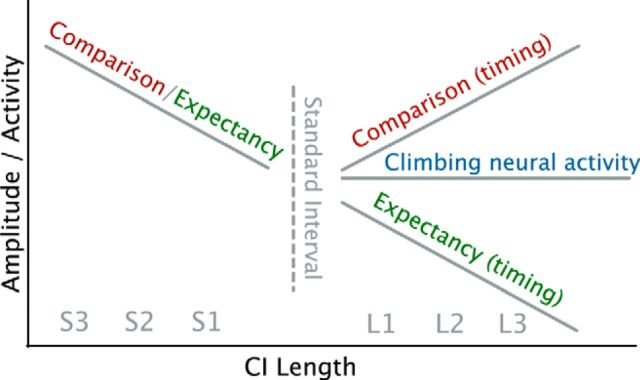Figure 1.
Graphical summary of hypotheses for Experiment 1. The line left of center indicates that all theories predict an increase in EP amplitudes for CIS further from the SI. Predictions for the CIL trials differ. The comparison-based hypothesis, supported by temporal oddball studies (Brannon et al., 2008), predicts an increase of offset-triggered EP amplitudes as a function of distance to the SI for the CIL trials. Conversely, the aging-based expectancy hypothesis predicts that EP amplitudes continue to decrease for CIL trials as a function of hazard rate (Niemi and Näätänen, 1981; Nobre et al., 2007; Coull, 2009). Both of these hypotheses suggest that timing continues after the SI duration has passed. The horizontal line depicts the CNA hypothesis. It predicts no differences in CIL-triggered amplitudes, as the CNA assumes that neural integration takes place until a particular threshold is reached (Durstewitz, 2003; Reutimann et al., 2004; Simen et al., 2011) and a decision is made. Because a single decision suffices, the CNA hypothesis would predict that no differences are observed for the different CI intervals.

